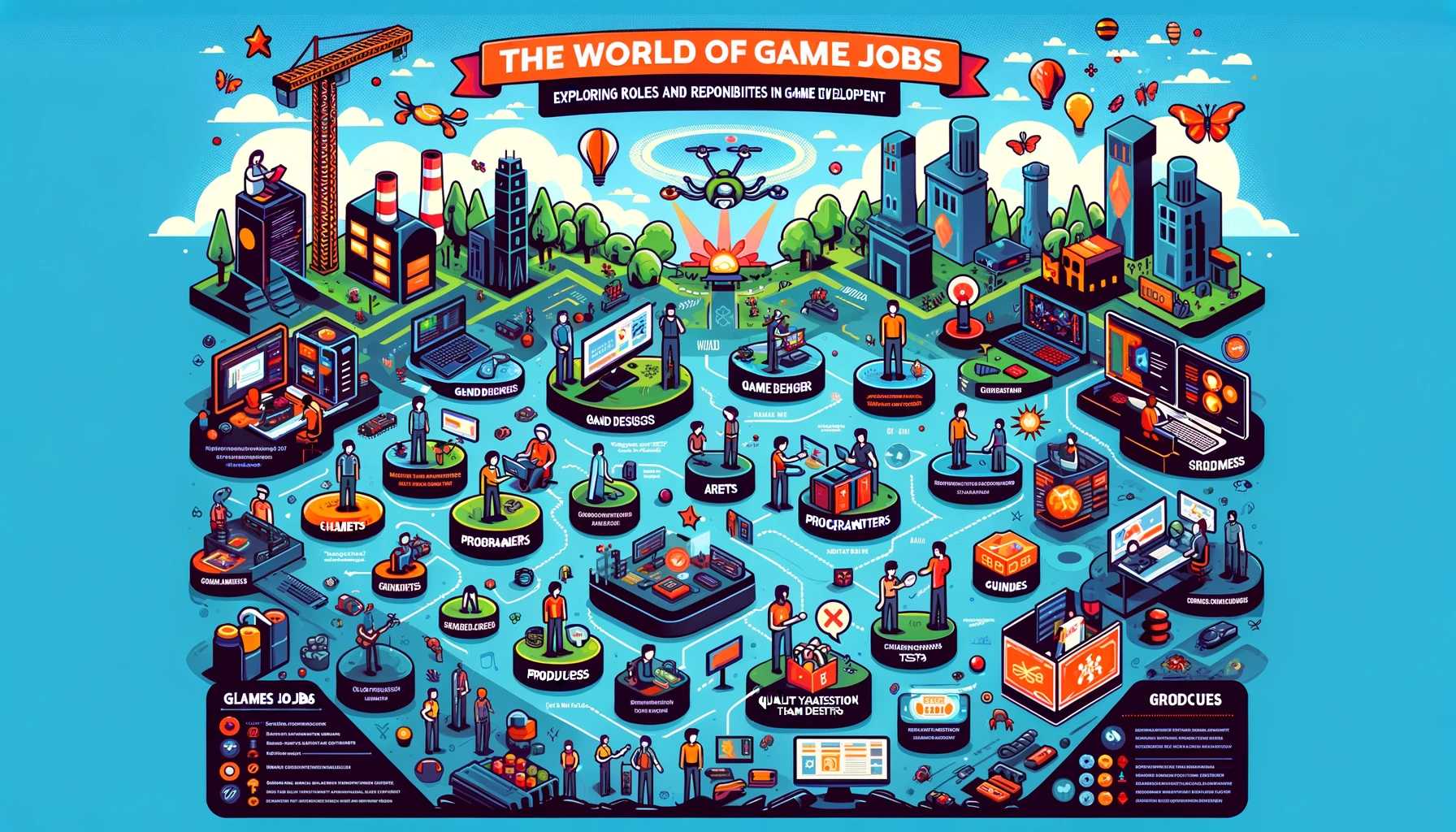Introduction:
Behind every captivating video game lies a dedicated team of professionals working tirelessly to bring immersive worlds to life. From game designers to programmers, artists to writers, each role plays a crucial part in shaping the player experience. In this comprehensive guide, we'll embark on a journey through the diverse landscape of game jobs, shedding light on the unique responsibilities and skills required for each role.
Game Designer:
At the heart of game development lies the game designer, responsible for conceptualizing and shaping the core mechanics, systems, and gameplay elements of a video game. Game designers collaborate closely with other team members to develop compelling narratives, engaging level designs, and innovative game features. They must possess a keen understanding of player psychology, game theory, and industry trends to create experiences that captivate and challenge players.
Game Programmer:
Game programmers are the architects behind the code that powers video games, translating design concepts into functional gameplay systems. They write and debug code, implement game mechanics, and optimize performance to ensure smooth and responsive gameplay. Game programmers must have proficiency in programming languages such as C++, Unity, or Unreal Engine, as well as strong problem-solving skills and attention to detail.
Game Artist:
Game artists bring the visual elements of a game to life, creating captivating environments, characters, and animations that immerse players in the game world. From concept art to 3D modeling, texturing, and animation, game artists use a variety of tools and techniques to realize the creative vision of the game. They must have a strong foundation in art fundamentals, as well as proficiency in software such as Photoshop, Maya, or ZBrush.
Game Writer:
Game writers are the storytellers behind the narrative elements of a video game, crafting compelling storylines, dialogue, and character arcs that drive the player experience. They collaborate closely with game designers, artists, and programmers to integrate narrative elements seamlessly into gameplay. Game writers must possess strong writing skills, creativity, and an understanding of interactive storytelling techniques to engage players and evoke emotion.
Game Producer:
Game producers oversee the development process from concept to completion, coordinating schedules, budgets, and resources to ensure that projects are delivered on time and within scope. They act as liaisons between different departments, facilitating communication and resolving conflicts to keep projects on track. Game producers must have strong organizational skills, leadership abilities, and a deep understanding of game development processes.
Quality Assurance (QA) Tester:
QA testers play a vital role in ensuring the quality and stability of video games by identifying and reporting bugs, glitches, and other issues during the development process. They conduct rigorous testing across various platforms and devices, providing valuable feedback to developers to improve the overall user experience. QA testers must have attention to detail, patience, and strong problem-solving skills to uncover issues and ensure that games meet high standards of quality.
Sound Designer:
Sound designers are responsible for creating immersive audio experiences that enhance the atmosphere and immersion of video games. From ambient soundscapes to character voices and special effects, sound designers use a combination of music, sound effects, and voice acting to bring games to life. They collaborate closely with other team members to integrate audio seamlessly into gameplay, creating a cohesive and immersive experience for players.
Level Designer:
Level designers are responsible for crafting the intricate environments, challenges, and puzzles that players encounter throughout the game. They work closely with game designers to implement gameplay mechanics and narrative elements into playable levels, ensuring a balance of difficulty, pacing, and player engagement. Level designers must have a keen eye for level flow, spatial design, and player progression to create memorable and immersive gaming experiences.
User Interface (UI) Designer:
UI designers focus on creating intuitive and visually appealing user interfaces that enhance the overall usability and accessibility of video games. From menus and HUD elements to interactive buttons and icons, UI designers design and implement interfaces that facilitate player interaction and navigation. They collaborate with game designers and artists to ensure consistency in visual style and user experience across all interface elements.
Concept Artist:
Concept artists are the visionaries behind the visual direction and aesthetics of a video game, creating concept art that serves as the foundation for the game's art style and design. They generate ideas, sketches, and illustrations that communicate the look and feel of characters, environments, and assets, helping to establish the artistic vision of the game. Concept artists must have strong drawing skills, creativity, and the ability to translate abstract ideas into tangible visual concepts.
Game Animator:
Game animators breathe life into characters, creatures, and objects within the game world, creating fluid and dynamic animations that enhance immersion and storytelling. From character movements and combat sequences to environmental effects and cinematic cutscenes, game animators use a combination of traditional animation techniques and digital tools to bring motion and personality to game assets. They collaborate closely with designers, artists, and programmers to integrate animations seamlessly into gameplay.
Narrative Designer:
Narrative designers are responsible for crafting the overarching storylines, plot twists, and character arcs that drive the narrative experience of a video game. They collaborate with game writers, designers, and artists to develop compelling narratives that resonate with players and evoke emotion. Narrative designers use a variety of storytelling techniques, branching narratives, and player choices to create immersive and interactive storytelling experiences that keep players engaged from start to finish.
Conclusion:
The world of game development is a vibrant and dynamic ecosystem that offers a wide range of exciting career opportunities. Whether you're passionate about storytelling, programming, art, or audio, there's a role for you in the world of video games. By understanding the diverse array of game jobs and the skills required for each role, you can embark on a rewarding journey in the ever-evolving landscape of game development. So, whether you dream of creating the next blockbuster title or indie gem, seize the opportunity to unleash your creativity and make your mark in the world of gaming.
